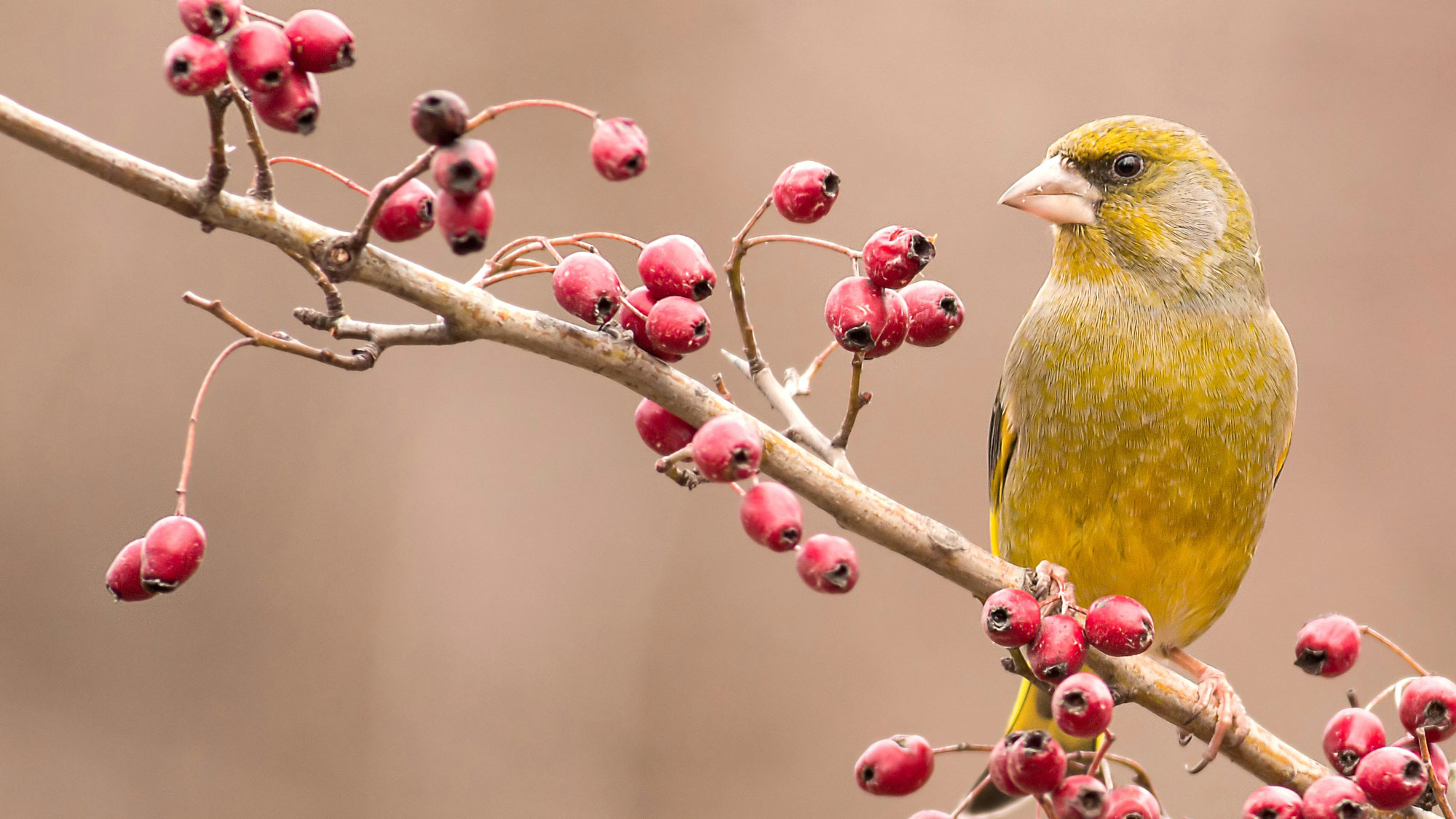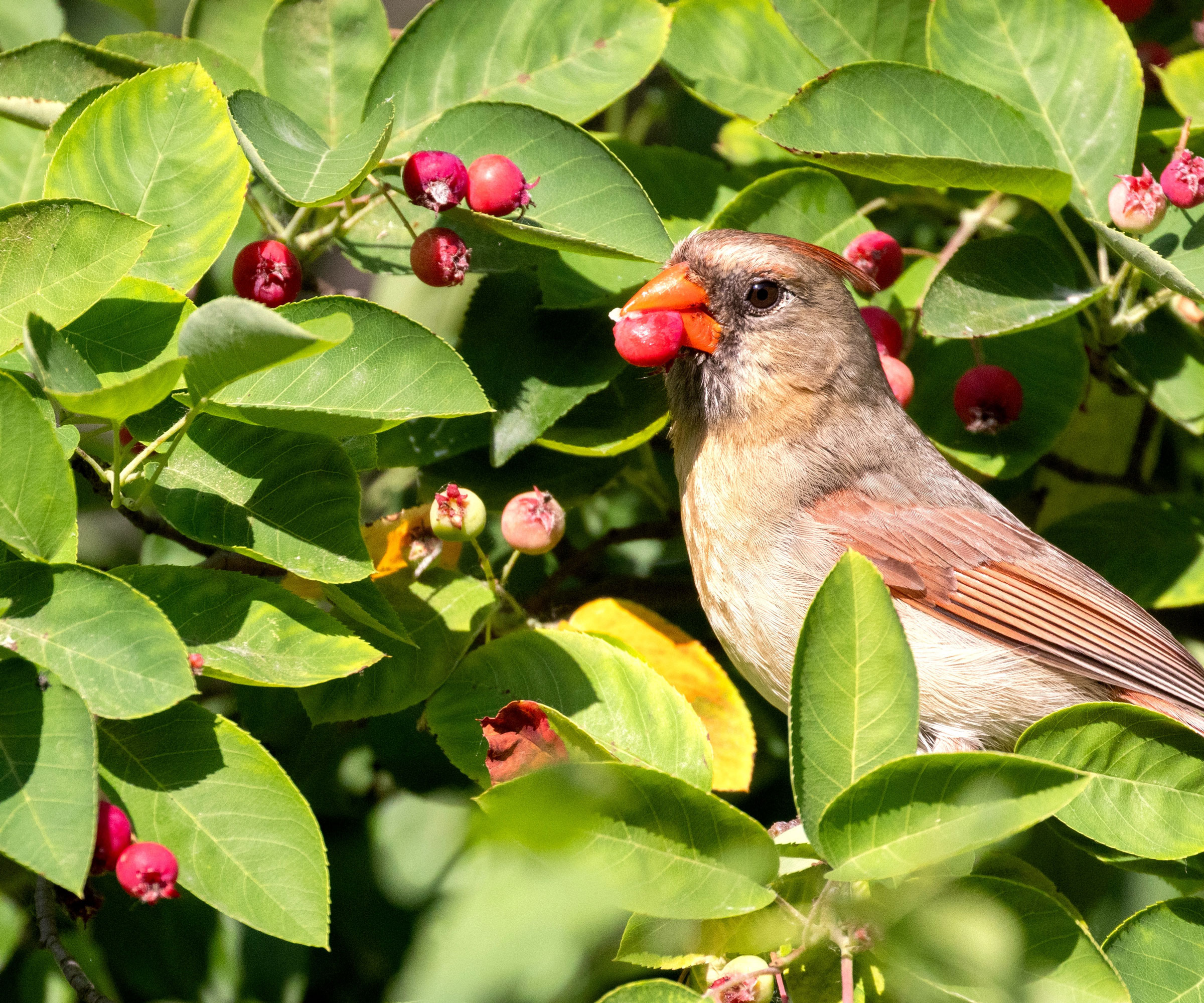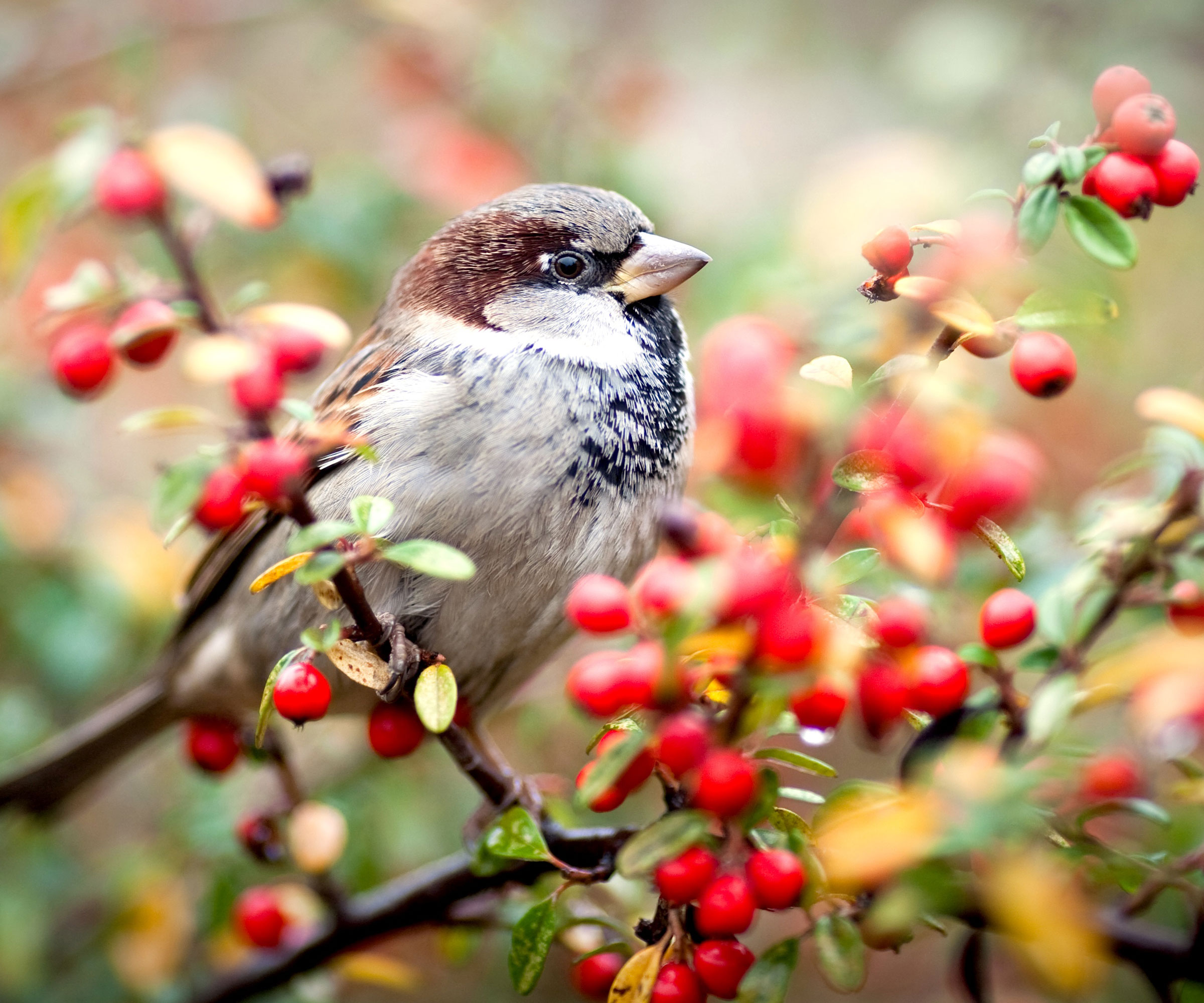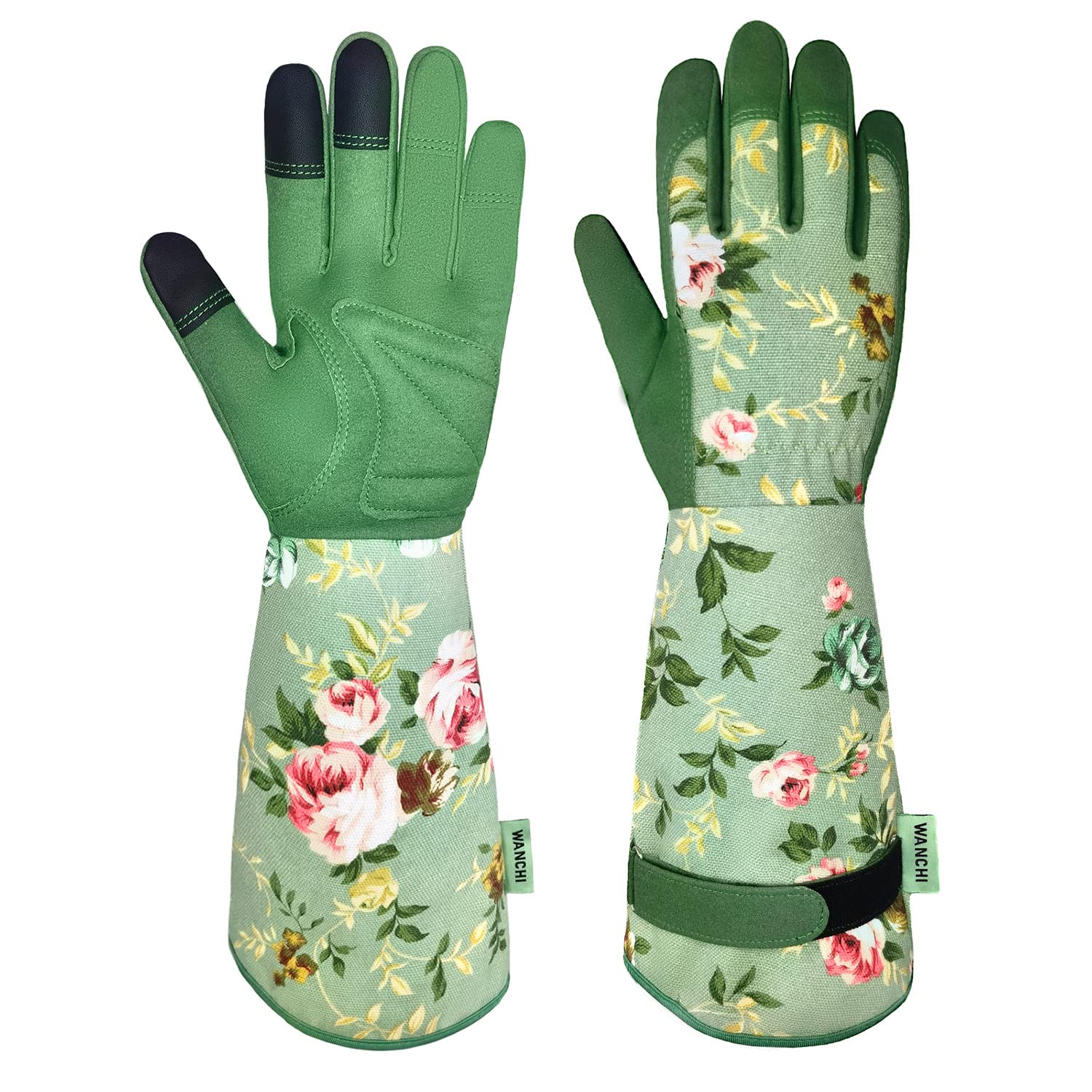5 Bird-Magnet Shrubs for Containers – For Bright Native Berries and Happy Wildlife in Winter
When the garden goes quiet, these vibrant winter berry shrubs burst with color and life. Grow these bird friendly shrubs for containers and you'll give your local wildlife a genuine winter treat


Late fall and winter may seem to cast a sleepy spell over much of the garden, but the sights and sounds of birds continue to bring joy to short winter days. At this time of year, one of the best ways you can invite them closer is by planting shrubs that feed them when other food sources are scarce. You may not have much room spare for large shrubs, but that’s ok. It’s perfectly possible to grow bird friendly shrubs for containers that can do the job for you. Many beautiful native berry bushes thrive in pots and planters — perfect for patios, balconies, or even a sunny doorstep.
These small but mighty specimens can sustain your birdie pals and add bright winter berries when many other plants are looking the worse for wear. Even without a large garden, these bird friendly shrubs for pots will provide color, texture and nourishment all winter long. Spice up your cool season container displays, support local wildlife and create your own bird sanctuary in the tiniest spaces with these stunning native berry shrubs.
Choosing Bird-Friendly Shrubs for Containers
If you’ve never grown shrubs in pots before, you needn’t worry. Most shrubs take well to container growing. When growing potted shrubs with berries for birds, just make sure you choose large, stable pots that won’t tip over easily and give your shrubs plenty of room to grow strong roots. Depending on your USDA planting zone, you should look for insulated pots if you live where winters are cold and snowy. Plants in pots get colder in winter than those with their roots in the ground, so it’s worth taking precautions and adding horticultural fleece layers or plant jackets such as GiaOne Winter Plant Pot Frost Protectors from Walmart.
When growing berrying and flowering shrubs in pots that will attract songbirds to your yard, use a high-quality potting mix like Miracle-Gro Potting Mix for Shrubs from Amazon, or a potting soil that drains well. Be sure the container has good drainage holes. Check your plant’s specific needs, as some winter berry shrubs need slightly more acidic potting mixes. Soil dries out more quickly in pots, so be prepared to water your shrubs more than you would if they were in the ground (even in winter).
Use a soil meter like Raintrip 4-in-1 Soil Meter from Amazon, which can help you identify nutrient conditions as well as moisture levels and also soil pH. With all these considerations met, you’re ready to transform your patio, balcony or compact yard into a cozy bird café with container shrubs that sparkle with winter berries. These potted shrubs with red berries (or black berries) are easy to grow, beautiful to behold, and loved by hungry birds all season long.
Top 5 Shrubs for Pots that Birds Love in Winter
These container-based patio shrubs for birds include smaller shrubs, dwarf varieties, and larger shrubs that you keep trimmed and manageable. You’ll find these 5 shrubs with berries for birds are a simple yet elegant way to attract and support visiting birds and brighten your outdoor space, however small or modest it may be.
1. Winterberry

Winterberry (Ilex verticillata) is a North American native holly that is fairly nondescript in summer. In fall and winter, however, it really shines. As the leaves drop, clusters of bright red berries develop. These low-maintenance shrubs look beautiful in the snow and also feed many native birds. Winterberry grows in USDA zones 3-9. To get berries, you’ll need both a male and a female shrub, so make room for two.
Sign up for the Gardening Know How newsletter today and receive a free copy of our e-book "How to Grow Delicious Tomatoes".
Winterberry is ideal for container gardeners who want a splash of red in the bleakest months, as well as native flowers for pollinators earlier in the year. As well as providing berries for a wildlife friendly garden, it tolerates wet soil, needs minimal pruning, and looks stunning against snow or evergreens. Choose dwarf cultivars like ‘Red Sprite’ or ‘Berry Poppins’ as potted shrubs for birds in winter. You can buy Winter Red Winterberry Shrubs from Fast Growing Trees for a pretty compact container. This is a female cultivar, so remember to pair a male with females for berries — one male can pollinate several females.
2. Chokeberry

Red and black chokeberries (Aronia spp.) are North American native shrubs that feed many native birds. They are suitable for USDA zones 4-9 and grow up to 10 feet (3m), but can be kept smaller in a container. You can grow this incredible native shrub in full sun or partial shade. This is a very generous native berry bush for birds, as it will produce showy berries from autumn into winter.
Chokeberry is one of the toughest native potted shrubs for birds in winter – drought-tolerant, cold-hardy, and unbothered by pests. Its glossy foliage turns red in fall, and the berries persist well into winter for birds like thrushes and waxwings. Compact cultivars such as ‘Low Scape Mound’ or ‘Iroquois Beauty’ are perfect for containers. Buy compact Viking Aronia Chokeberry from Fast Growing Trees for a dazzling fall display to accompany those bird-friendly berries.
3. Serviceberry

This cold-hardy perennial shrub is a winner if you seek dazzling and delicious berries for songbirds. Serviceberry (Amelanchier canadensis) can grow quite large, up to 25 feet (7.6m), but can be maintained at a smaller size in a big planter. You can grow these small shrubs for birds in USDA zones 4-9. The spring flowers, summer berries and fall color make serviceberry shrubs a 4-season favorite. These multi-season shrubs reward you in winter with an abundance of red fruits that birds love – and you can eat them, too.
Though often grown as a small tree, serviceberry adapts well to large pots with rich soil. Try dwarf forms like ‘Regent’ or prune annually to maintain a compact shape. You can buy Serviceberry Plants from Amazon, but remember to choose a generous container at least 24in (60cm) in diameter to accommodate these slightly larger shrubs. Position these native berry bushes in full sun or partial shade for the best winter berries.
4. Dwarf Holly

Evergreen hollies are beloved for their attractive leaves and colorful berries that provide visual interest in winter. In addition to native winterberry, you can find dwarf varieties of native holly species that birds can feed on, including Yaupon holly, American holly, and inkberry. When growing evergreen holly in containers, look for dwarf types and holly varieties that are suitable for your growing zone. For example, Yaupon varieties can be grown in warmer climates. Like winterberry, you'll need a male and female shrub to get berries. You also need to make sure container size allows for ample root space and pot stability in winter winds.
Dwarf hollies (Ilex species) add year-round structure and evergreen texture to container gardens and work well planted near bird baths. They’re slow-growing, easy to shape, and their glossy leaves and red berries provide reliable winter color. Look for compact types such as ‘Nana’ inkberry or ‘Schillings Dwarf’ yaupon holly. As with winterberry, you’ll need both male and female plants for fruit. Buy Dwarf Holly ‘Blue Princess’ as potted plants from Walmart for glossy blue green leaves as well as berries for winter birds; it will look gorgeous if grown in slightly acidic potting soil.
5. Staghorn / Winged Sumac

Winged or Staghorn Sumac (Rhus copallinum or typhina) are both native shrubs with showy flower cones that develop into fall drupes that birds love. The drupes start out bright red and develop into a darker red that persists through winter. Grow winged or staghorn sumac plants in pots in USDA zones 3-8, in full sun or partial shade. Winged sumac is a little smaller for happy container living. Just ensure you choose a sturdy, heavy container to allow your sumac as much growing space as possible.
For a bold statement, grow these cheery bird garden ideas in a roomy container for impressive drought-tolerant winter color. The fern-like leaves glow in autumn, and the velvety red seed clusters persist through winter, feeding many bird species. Although these shrubs can take two or three years to grow from seed, you can buy Staghorn Sumac Seeds from Amazon. Prune suckers to keep them neat in pots. A little light pruning makes all the difference for container-grown sumac plants.
Best Winter Care for Keeping Birds Happy

Providing shrubs with edible berries is just one thing you can do to keep native birds coming to your garden or patio over winter. It’s important to ensure that you have all the bases covered for your little birdy pals as the chillier months begin in earnest. Make sure you follow this essential winter checklist to make your yard bird-friendly:
- Water: Birds need food, but also water to drink and to bathe. Use a bird bath or other shallow dish and add a heater in winter to prevent icing, so they have year-round access. Alternatively, use a rubber duck or ping pong ball to prevent icing. Grab a Mellbree Bird Bath Copper Disk from Amazon to help keep bird bath water clean.
- Shelter: Birds need shelter, too. Group your potted shrubs close together to give them a nice, sheltered location to rest or stay safe from predators. You should also make sure you have some sort of bird house for longer resting opportunities. There are some lovely bird house and camera options available, such as the KinetCam Bird House with Camera from Amazon, to keep birds protected and encourage them to stay over winter ahead of early spring nesting.
- Additional Food: Planting more native species is the best way to provide food for birds, but don’t make the mistake of thinking this is all your birds need. Additional food is especially critical in winter, as many other food sources will be dwindling. You can get great bird-feeder-and-camera combos such as the TT Nature Bird Feeder from Amazon to nourish feathered friends as a supplement to your potted winter berry shrubs. Fill your feeder with seeds, grains or suet.
Winter Container Garden Essentials
Your pots need to be in peak health to keep feeding birdies through winter. Make sure your container shrubs stay at their best and attract as many birds to your backyard as possible, with the help of these container and winter planting essentials:

This understated planter is weather resistant, easy to assemble, and has a generous capacity. Perfect for showcasing small berrying shrubs.

Anti-tipping and windproof, this stylish screen is a buffer for extremes of weather while still allowing hungry birds free access to your berries.

Keeping container shrubs protected in winter is vital, but don’t neglect your own hands. These leather ever-readies are breathable, comfortable – and cute.
Don’t Forget…

When the garden feels still, these shrubs keep life flowing, With bright berries for the birds, these stunning plants for winter color are a beautiful reminder that even the smallest space can make a difference. Growing native berries in pots is an easy way to help local birds. Every berry you grow helps a bird survive the lean months, and every native plant in a pot supports the wider web of local life. Whether you have a sprawling garden, a single balcony or a patio, shrubs for birds can thrive in the tinest spaces and prove that small choices in winter make a lasting difference for wildlife.
With a few well-chosen shrubs in pots, you can create a small haven that keeps local birds fed and your outdoor space glowing with life. Add water, shelter, and a steady food supply, and your patio becomes part of the natural winter landscape – a thriving habitat right outside your window!
Share your favorite bird visitors or tag your winter container garden photos on social media – we’d love to see what’s flocking to your pots this season!
Need more ideas for seasonal wildlife ideas and gardening advice delivered straight to your inbox? Sign up for the free Gardening Know How Newsletter!

Mary Ellen Ellis has been gardening for over 20 years. With degrees in Chemistry and Biology, Mary Ellen's specialties are flowers, native plants, and herbs.
- Janey GouldingContent Editor
- Amy DraissDigital Community Manager